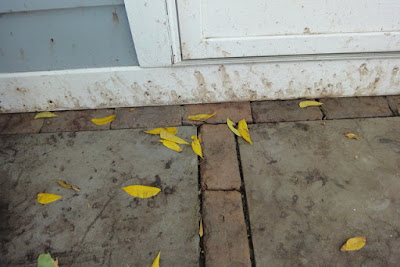Part
1 of At War With The Squirrels drew a large, animated and creative response
from readers. The suggestions for
combating squirrels sent me back to Sun Tzu’s classic The Art of War to look for parallels between my readers’
suggestions and the precepts set forth by the author.
Although written in the 5th
century BC, The Art of War should be
read by anyone entering battle today.
Sun Tzu wrote this guidebook for generals -- commanders of the field and
the troops. It is equally useful in the
battlefield and the boardroom. But does
it apply to gardening in a hostile environment?
Isn’t this a kind of warfare too?
Sun Tzu identifies seven
considerations by which one can forecast victory or defeat. Although they all apply in some manner to our
squirrel war, the second condition is the most relevant: “Which
of the two sovereigns is imbued with the Moral Law.” Indeed, if this battle were to be observed
from another planet, who would appear to be the superior species? The one attacking from above? Or the one on the defensive below, picking up
debris while ducking to evade the assault?
1. All warfare is based on
deception.
We
started with this premise, and in Part 1 I attempted to deceive. Having observed the squirrels shelling nuts
on my bluestone front walk and the 4’ bluestone squares of my now unusable
terrace, I paved an area adjacent to the newly located walnut storage corner of
the garden. The plan was to lure the squirrels
away from the house, and it seems to have worked for the sorting component of the
problem, but has not stopped the attacks.
2.Hold out bait to entice the
enemy. Feign disorder and crush him.
Paola
and KC: We thought maybe setting up a dispenser
with rugelach might distract the squirrels from the garden.
3. In all fighting, the direct
method may be used for joining battle, but indirect methods will be needed to
secure victory.
Sally:
You might want to try an ultrasonic deterrent. I have one for my window box; the
squirrels come all the way to the 4th floor via the fire escape.
Tom:
I might try playing some of Trump’s campaign speeches through loudspeakers at
them. Those that don’t die laughing
deserve to live.
4. Rouse him, and learn the
principle of his activity or inactivity.
Force him to reveal himself, so as to find out his vulnerable spots.
Dacie: How about a dog, especially a Jack Russell
terrier?
Prudence: Try sprinkling camphor balls near their lair.
5. In war, let your great object be
victory, not lengthy campaigns.
Susan:
No mention of killing the damn tree?
6. To secure ourselves against
defeat lies in our own hands, but the opportunity of defeating the enemy is
provided by the enemy himself.
Jean:
Good luck with your battle, but I’ve never heard of a human winning.
7. If the campaign is protracted,
the resources of the State will not be equal to the strain.
8. The art of war teaches us to
rely not on the likelihood of the enemy’s not coming, but in our own readiness
to receive him; not on the chance of his not attacking, but rather on the fact
that we have made our position unassailable.
My
position is totally assailable, so I continue to plot for protection. My latest idea is to build a second arbor
parallel to the first and erect shade sails using the house wall and the arbor
posts as anchors. An alternative is two
rows of tensioning cables that will span the 22 feet of terrace, one above the
other. The lower cables could support
vines, while the upper cables could hold a shade cloth to be used only
seasonally. The third option appeared in Part 1, an open frame peaked roof,
covered seasonally in protective cloth.
It is still in the running.
9. The difficulty of tactical
maneuvering consists in turning the devious into the direct, and misfortune
into gain.
Jonathan: Walnut husks are one of the few natural dyes
that do not require a mordant or fixative.
If I were you I would just spread canvas over the patio for the entire
fall. Allow the walnuts to drop and
stain the canvas. When winter approaches
and the nuts stop falling, examine the canvas and select a section to stretch
and frame. I bet the results, a
perfectly natural abstract expressionist work related to the staining
techniques of Frankenthaler and the palette of Pollack and Kline and the
“nature spirit” of Pousette-Dart will be astonishing.




